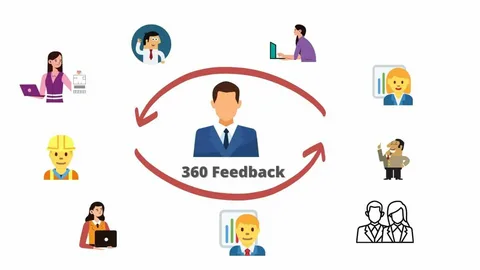The Power of 360 Feedback in Professional Development

In today’s fast-paced and competitive business environment, organizations are constantly searching for effective ways to improve employee performance and strengthen workplace culture. One tool that has gained significant popularity in recent years is 360 feedback. Unlike traditional performance reviews, which usually rely on a single manager’s evaluation, 360 feedback incorporates input from multiple perspectives, including supervisors, peers, subordinates, and sometimes even customers. This holistic approach provides a much clearer and more balanced picture of an employee’s strengths and areas for improvement.
What is 360 Feedback?
360 feedback is a structured evaluation system designed to capture feedback from a wide range of sources within an organization. The process usually involves anonymous surveys where colleagues provide honest assessments of a person’s communication style, teamwork, leadership abilities, problem-solving skills, and other competencies relevant to their role. By collecting input from multiple people, organizations reduce the risk of bias and gain a more accurate understanding of individual performance.
The insights gathered through this process help employees reflect on how their actions and behaviors are perceived across different groups. This makes 360 feedback not just a performance measurement tool but also a valuable developmental resource for personal and professional growth.
Why 360 Feedback Matters
Traditional performance reviews often create stress and may feel one-sided. An employee’s progress and abilities are judged solely by a supervisor who may not observe all aspects of their work. This limited viewpoint can lead to incomplete or inaccurate assessments. In contrast, 360 feedback is designed to highlight diverse perspectives, ensuring that employees receive well-rounded insights into their performance.
Some key benefits include:
- Comprehensive Evaluation – Employees gain feedback not only from their managers but also from peers and subordinates, offering a more complete perspective.
- Enhanced Self-Awareness – Understanding how others perceive them allows employees to identify blind spots and work on areas they may not have noticed before.
- Improved Team Collaboration – Since the process emphasizes feedback from peers, it encourages stronger communication and teamwork.
- Employee Development – Rather than focusing only on weaknesses, 360 feedback highlights strengths, which helps employees leverage their skills more effectively.
- Increased Accountability – Receiving input from multiple sources often motivates individuals to take ownership of their behavior and performance.
Best Practices for Implementing 360 Feedback
For organizations looking to introduce this approach, it is important to follow best practices to ensure success. First, confidentiality is key. Employees should feel safe providing honest feedback without fear of retaliation. Surveys should remain anonymous to encourage openness.
Second, the process should be positioned as a developmental tool rather than a judgmental one. If employees view feedback as purely evaluative, they may become defensive or disengaged. Instead, organizations should frame it as an opportunity for growth.
Third, managers and HR professionals must provide support after the feedback is collected. This means offering coaching sessions, training programs, or workshops that help employees take actionable steps based on the results. Without proper follow-up, the process loses much of its effectiveness.
How 360 Feedback Supports Leadership Development
One of the most impactful uses of 360 feedback is in leadership development. Effective leaders are those who inspire trust, communicate clearly, and foster collaboration. However, leaders may not always be aware of how their actions affect others. Through feedback from colleagues at different levels, leaders gain valuable insights into their management style and areas where they can improve.
For example, a manager might believe they are approachable, but feedback from their team could indicate otherwise. This awareness provides an opportunity for reflection and behavioral change, ultimately making them more effective leaders.
The Role of Technology in Modern Feedback Systems
With advancements in technology, the process of gathering and analyzing feedback has become more efficient and user-friendly. Online platforms streamline surveys, ensure anonymity, and generate detailed reports that highlight patterns and trends. These tools allow organizations to measure competencies consistently and track improvements over time.
One such resource is AlignMark 360 feedback, which offers organizations a structured way to implement this process effectively. By using advanced systems, companies can not only gather feedback but also create actionable strategies to drive professional growth and team success.
Conclusion
360 feedback has emerged as a powerful tool for building stronger teams, enhancing leadership, and driving overall organizational success. By focusing on multiple perspectives, it provides employees with a balanced understanding of their performance, which is often missing in traditional reviews. When implemented correctly—with anonymity, transparency, and supportive follow-up—this feedback system can transform workplace culture and empower individuals to reach their full potential.
As organizations continue to prioritize growth, innovation, and employee engagement, 360 feedback will remain an essential component of professional development strategies.


